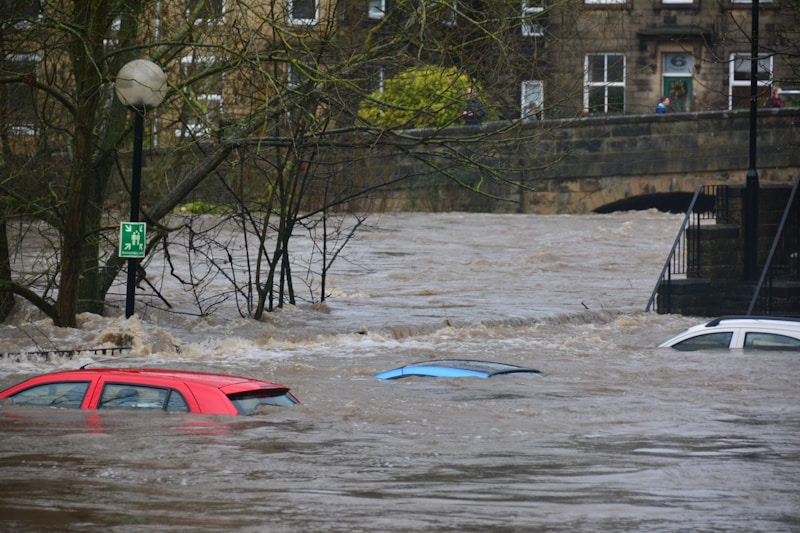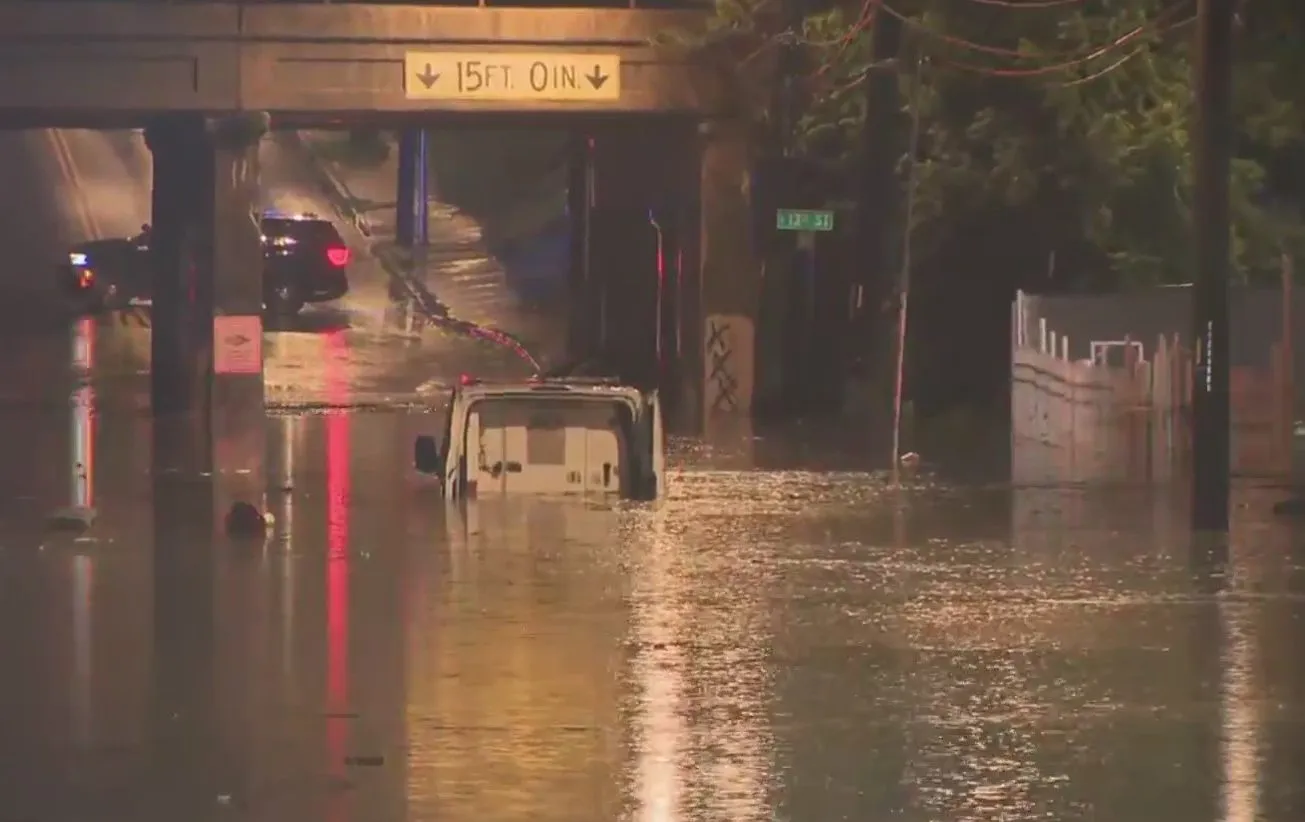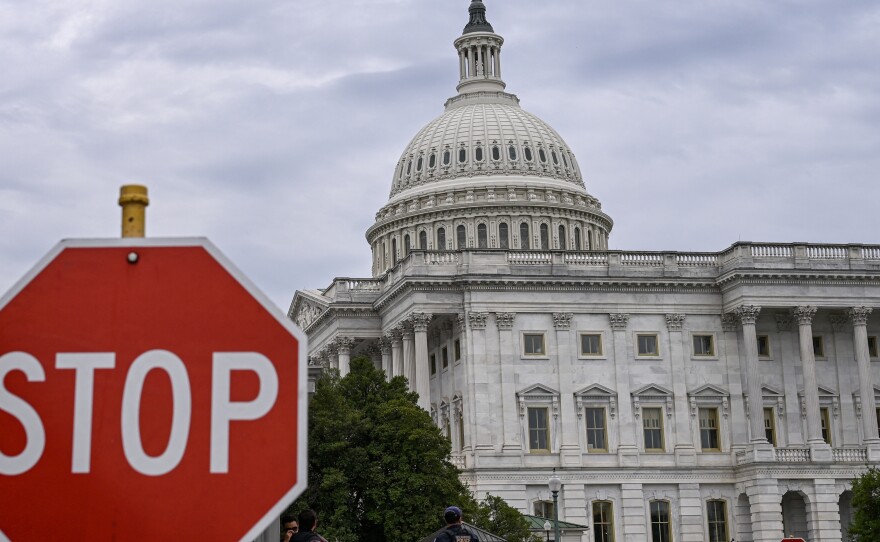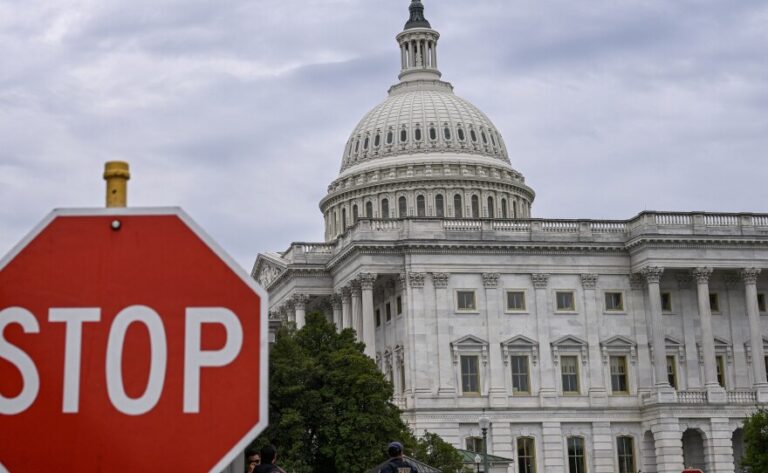KANSAS CITY, Mo. – July 17, 2025 – Severe thunderstorms and torrential rainfall overnight have triggered dangerous flash flooding across the Kansas City metropolitan area, prompting emergency responders to conduct at least 18 water rescues by early Thursday morning.
The Kansas City Fire Department reported that all rescue calls involved vehicles trapped in high water at known flood-prone locations throughout the city. Emergency crews have been working tirelessly since the pre-dawn hours to assist stranded motorists.
Current Situation and Emergency Response
According to KCFD officials, the most severely affected areas include southbound I-35 at Broadway and southbound I-35 at Lamar, where multiple vehicles became stranded in rapidly rising waters. Emergency responders have successfully reached most victims, helping them walk to safety.
“In most cases, our teams have been able to arrive quickly and assist people out of their vehicles,” a KCFD spokesperson stated. “However, we expect these rescue operations to continue throughout the morning until the rain subsides.”
The National Weather Service issued a Flash Flood Warning for multiple counties in the Kansas City area, effective through early Thursday morning. Meteorologists reported that between 2 and 3.5 inches of rain had already fallen across the warned areas, with an additional 0.5 to 1.5 inches possible.
Power Outages Compound Emergency
The severe weather has also caused widespread power outages across the metro area. By 6 a.m. Thursday, more than 20,000 Evergy customers were without electricity, a dramatic increase from the 3,000 affected at midnight.
Utility crews are working to restore power, but officials warn that the ongoing weather conditions may hamper repair efforts.

Historical Context: Kansas City’s Flood History
Kansas City has a long and devastating history with flooding. The Great Flood of 1951 remains the most catastrophic in the city’s history, when the Kansas River breached levees and flooded the Argentine and Armourdale districts in Kansas City, Kansas, and the West Bottoms of Kansas City, Missouri.
That historic flood resulted in:
- 28 deaths in the Kansas City region
- $500 million in damage (equivalent to $3 billion in today’s dollars)
- 45,000 homes damaged or destroyed
- 2 million acres flooded from Kansas to St. Louis
The 1977 flash flood along Brush Creek killed 25 people and caused over $100 million in property damage, making it the deadliest flood in Kansas City’s modern history. The USGS recorded over 11 inches of rain in Independence during that event, with some areas receiving up to 16 inches.
Safety Warnings and Travel Advisories
Emergency management officials are urging residents to exercise extreme caution and avoid unnecessary travel. Key safety reminders include:
- Turn Around, Don’t Drown: Just 6 inches of moving water can knock you down, and 2 feet of water can sweep away most vehicles
- Avoid Known Flood Areas: Stay away from low-lying streets and areas prone to water accumulation
- Never Drive Through Standing Water: Road surfaces may be compromised beneath flood waters
- Be Especially Cautious at Night: Flood dangers are harder to recognize in darkness
- Respect Barricades: Never drive around barriers – they’re placed for your safety
Climate Change and Increasing Flood Risks
Recent studies indicate that extreme weather events, including flash flooding, are becoming more frequent and intense due to climate change. The 2021 IPCC report highlighted that human-induced climate change is increasing the frequency and intensity of extreme heavy rainfall events.
Local climate data shows a concerning trend of increasing rainfall intensity in the Kansas City region since 1970, with rare extreme events becoming more common.
Current Road Closures and Traffic Impacts
Multiple roadways across the Kansas City metro remain closed or hazardous due to flooding:
- Southbound I-35 at Broadway – Multiple lanes blocked
- Southbound I-35 at Lamar – Significant flooding reported
- Various surface streets in low-lying areas throughout the city
- Secondary roads in Johnson County, Missouri
The Missouri Department of Transportation (MoDOT) and Kansas Department of Transportation are monitoring conditions and updating road closure information in real-time.
Community Resources and Assistance
For residents affected by flooding, several resources are available:
- Emergency Assistance: Call 911 for life-threatening emergencies
- Power Outages: Report to Evergy at 1-888-544-4852
- Road Conditions: Check MoDOT’s traveler information map for current conditions
- Flood Insurance: Contact the National Flood Insurance Program at (913) 837-5220
- Red Cross Assistance: 1-800-RED-CROSS for emergency shelter and supplies
Looking Ahead: Weather Forecast
The National Weather Service indicates that the storm system is expected to move through the area by late Thursday morning. However, with saturated ground conditions, the risk of additional flooding remains elevated even after the rain stops.
Meteorologists are closely monitoring the situation and warn that any additional rainfall could exacerbate flooding conditions. Rivers and streams are expected to remain above flood stage for several days.
Previous 2025 Flooding Events
This latest flooding event adds to what has already been an active year for severe weather in the Kansas City region. In April 2025, flooding forced the closure of multiple routes in Johnson County, Missouri, including Route 23 and Route E.
Earlier in June 2025, flash flooding in nearby Sedgwick and Butler counties resulted in numerous water rescues, with the Wichita Fire Department responding to 80 submersion calls in a single day.
Stay Informed and Stay Safe
As this severe weather event continues to unfold, authorities stress the importance of staying informed through official channels. Residents are encouraged to monitor local news, weather alerts, and official emergency management communications.
The Kansas City emergency management team will continue to provide updates throughout the day as conditions evolve. Remember: your safety is paramount – no destination is worth risking your life by driving through flood waters.














